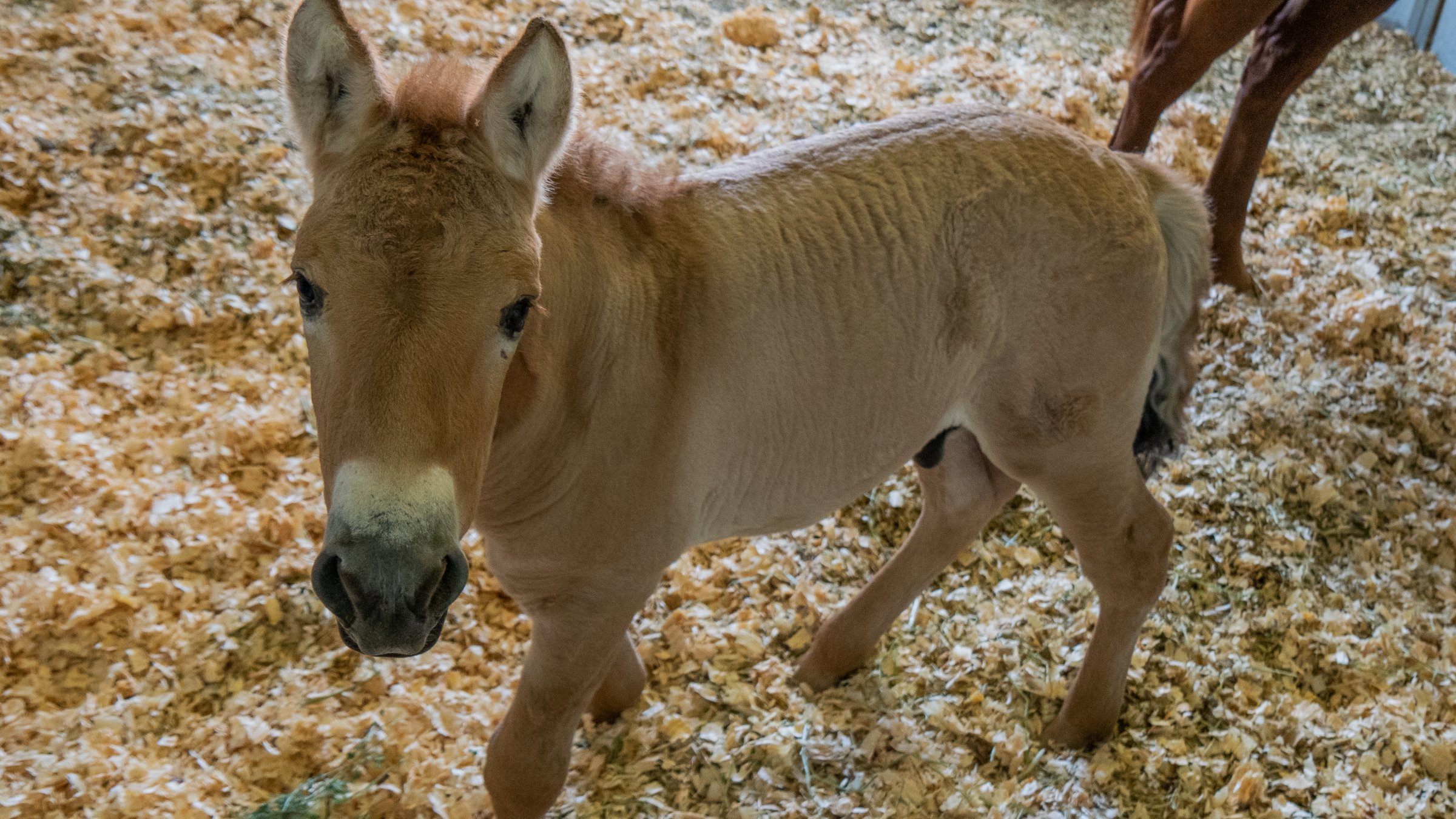
The first successfully cloned endangered Przewalski’s horse was born on Aug. 6 in a veterinary facility in Texas, San Diego Zoo Global announced on Friday. The horse was cloned from DNA of a male Przewalski’s horse cryopreserved by the zoo in 1980.
Przewalski’s horses are “critically endangered” animals that are found in Mongolia, per Smithsonian’s National Zoo. They’re considered the last species of “truly wild horses” and are “distant cousins” of modern day domestic horses, having likely split from a common ancestor around 500,000 years ago, per the Smithsonian.
Przewalski’s horses were once extinct in the wild, and while intensive breeding programs helped revive the species and reintroduce them into the grasslands of China and Mongolia, nearly all can be traced back to 12 Przewalski’s horses that were born in the wild, the San Diego Zoo said in its press release. The successful cloning of DNA collected 40 years is meant to introduce key genetic diversity into the species that could benefit its survival. The zoo said the cloned Przewalski’s horse will eventually be transferred to the San Diego Zoo Safari Park and integrated into a herd of other Przewalski’s horses for breeding.
“The work to save endangered species requires collaborative and dedicated partners with aligned goals,” Paul A. Baribault, president of San Diego Zoo Global, said in a statement. “We share in this remarkable achievement because we applied our multidisciplinary approach, working with the best scientific minds and utilizing precious genetic material collected and stored in our wildlife DNA bio bank.”
The cloned Przewalski’s horse was named Kurt after Dr. Kurt Benirschke, the creator of the San Diego Zoo Global Frozen Zoo, which has been collecting and preserving genetic material of endangered animals since 1975.
San Diego Zoo Global partnered with Revive & Restore—a wildlife conservation group that aims to incorporate biotechnology into conservation efforts—and ViaGen Equine—a company that clones horses and pets—to successfully clone the Przewalski’s horse.
“This birth expands the opportunity for genetic rescue of endangered wild species,” said Ryan Phelan, executive director of Revive & Restore, in a statement. “Advanced reproductive technologies, including cloning, can save species by allowing us to restore genetic diversity that would have otherwise been lost to time.”
Przewalski’s horses are not the only species Revive & Restore is trying to revive via biotechnology. The group is attempting to revive at least six endangered or extinct species, including the Wooly Mammoth, which went extinct around 4,000 years ago. Other organizations and research facilities are also attempting to revive extinct or endangered species with biotechnology, including the International Islamic University Malaysia, which plans to revive the recently extinct Sumatran rhino.
More Must-Reads from TIME
- Where Trump 2.0 Will Differ From 1.0
- How Elon Musk Became a Kingmaker
- The Power—And Limits—of Peer Support
- The 100 Must-Read Books of 2024
- Column: If Optimism Feels Ridiculous Now, Try Hope
- The Future of Climate Action Is Trade Policy
- FX’s Say Nothing Is the Must-Watch Political Thriller of 2024
- Merle Bombardieri Is Helping People Make the Baby Decision
Write to Madeleine Carlisle at madeleine.carlisle@time.com